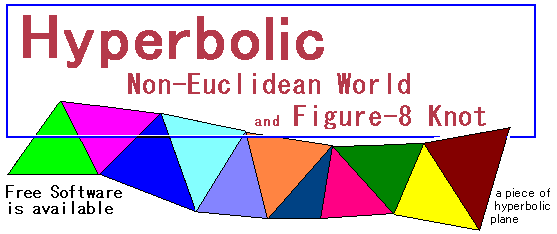
Hello, my name’s Christian Lawson-Perfect and my main mathematical interest is “everything”.
Before The Aperiodical existed as its own thing, the only outlet I had for my mathematical eclecticism was a series of posts on the Acme Science blog called Aperiodical Round-Up. Eventually I stopped writing them, as work and family took up more of my time. This post has been sitting in The Aperiodical’s drafts folder for six years. Time to finish it!
Let’s begin with the first 10,000 digits of π dialled on a rotary phone.
10,000 digits is more than I could ever remember. I’m glad I’ve got a reference to come back to if I ever need anything after the first six I’ve memorised. References are handy to have, and it’s hard to find an area of maths that doesn’t have at least one.
There’s an Encyclopedia of Finite Graphs. If you need slightly more but not a lot more whimsy, there’s the House of Graphs and its database of interesting graphs. If graphs aren’t your bag, there’s also a database of L-functions and modular forms.
Counterexamples are harder to categorise, but also worth collecting. Math Counterexamples features such handy objects as a module without a basis.
Giovanni Resta’s Numbers aplenty is an Aladdin’s cave of number facts. It’s like maximalist Number Gossip. There’s a convention to use wordplay when naming families of numbers to help you remember what they mean, like Achilles (powerful but not a perfect power) or emirp (prime forwards and backwards). You really see the limits of this approach when they’re gathered together on one page: any idea what an iban number is when it’s not an International Bank Account Number? Anyway, like Number Gossip, you can type in a number and receive a list of facts about it that are interesting to varying degrees. Weirdly, it thinks it’s notable that $3435 = 3 + 3^5 + 4^3+ 5^5$, but not that $3435 = 3^3 + 4^4 + 3^3 + 5^5$.
If you want an online database of mathematical facts that’s neither authoritative nor useful, but could be mistaken from a distance for an occult conspiracy libel, “196 and other Lychrel numbers” is the site for you. Or rather, it was – it seems to have disappeared since I noted it down a few years ago. Ask yourself this: who stands to gain from its disappearance?
Once you start looking, you see menacing mathematics everywhere: “Kepler, Dürer and the mystery of the forbidden tilings” is a subheading to set the heart racing. Implied conspiracy? No, Imperfect congruence: an essay in four parts and a few appendices by Kevin Jardine, about tilings and the fact that no edge-to-edge regular polygon tiling of the plane can include a pentagon.
Once you start looking, you find that mathematics really is everywhere. Some walls in Leiden have formulas on them; you can thank Jan van der Molen and Ivo van Vulpen for that. Other walls in Leiden have poems on them; it’s important to have a varied diet.
Which Springer Verlag graduate text in mathematics are you? I’m Saunders Mac Lane’s Categories for the Working Mathematician.
Antonio Marquez-Raygoza has made a lovely page about constructing the Sierpiński triangle, with interactive diagrams. If you’ve read and absorbed all of that – I don’t think you have, by the way – you can visit Tadao Ito’s Hyperbolic Non-Euclidean World and Figure-8 Knot. Pack a bag – I reckon I’d need to spend at least a week in Hyperbolic Non-Euclidean World to see all the sights.

For some mathematical enrichment closer to home, Yutaka Nishiyama has thought up 55 examples of mathematics in daily life.
Now, a sequence of links to pictures.
The Picture this maths blog, run by Rachael Boyd and Anna Seigal, features essays on an eclectic range of topics. The schtick is – maybe you can guess – there are lots of pictures.
DivulgaMAT has a collection of Instantáneas Matemáticas – snapshots of maths in old works of art, which I’ve always got time for.
Dataisnature collects examples of the “hand-drawn yet precise diagrams with sparse lines and the occasional dot” aesthetic. A post linking John Cage’s music and nomography has reignited my fascination with nomograms, leading me to Ron Doerfler’s book on The Lost Art of Nomography, and his fabulous 2010 graphical computing calendar. Excitingly, there’s a program called pyNomo which sufficiently powerful wizards can use to produce their own nomograms!
Robert Munafo has drawn a charmingly old-hat ASCII fractal drawing of the Feigenbaum point. However, the connoisseur knows that a true fractal must be printed out on a dot matrix or at least produced with a typewriter: anything else is just sparkling self-similarity.
That’s it for now!